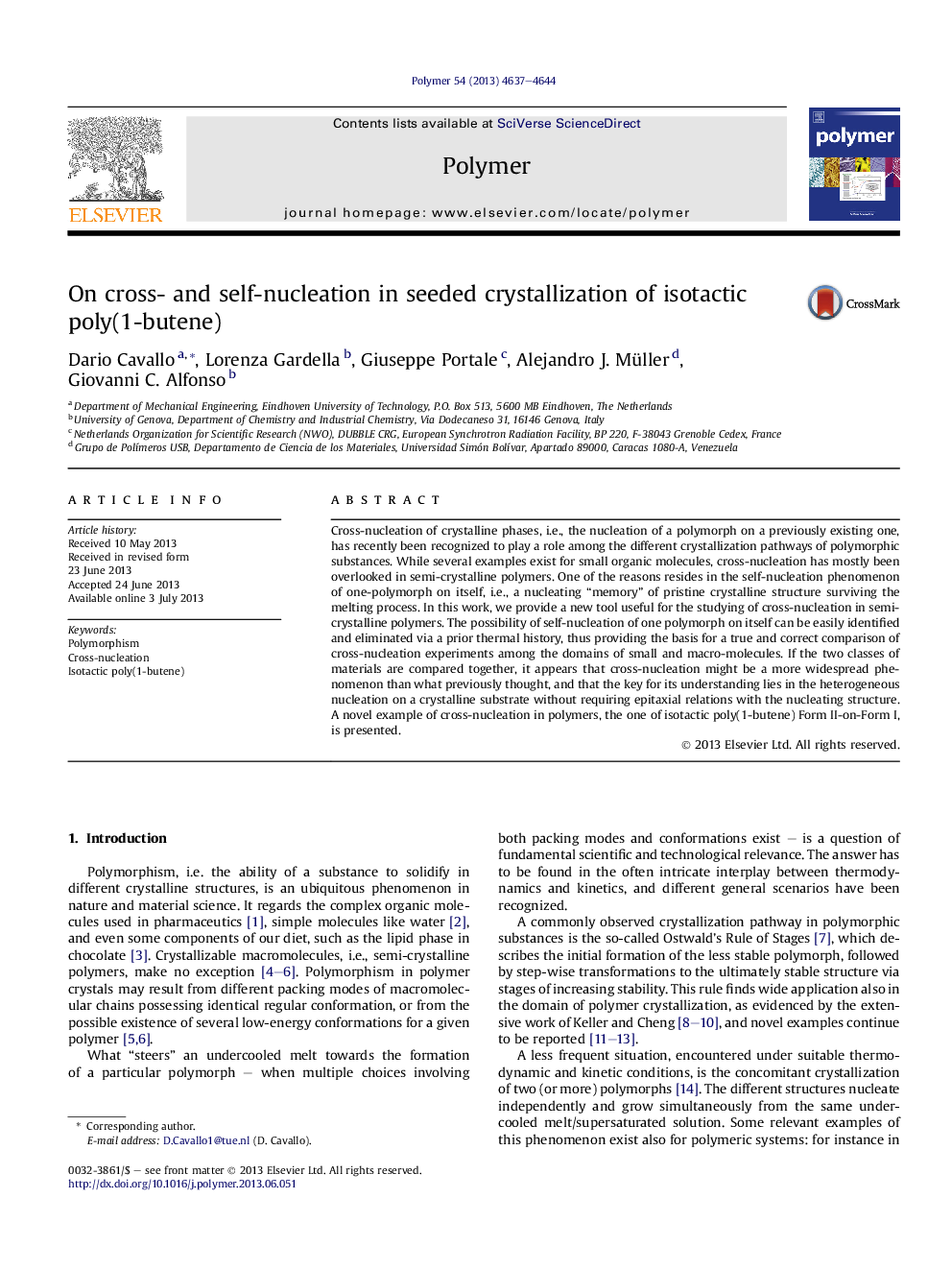| Article ID | Journal | Published Year | Pages | File Type |
|---|---|---|---|---|
| 5181800 | Polymer | 2013 | 8 Pages |
Cross-nucleation of crystalline phases, i.e., the nucleation of a polymorph on a previously existing one, has recently been recognized to play a role among the different crystallization pathways of polymorphic substances. While several examples exist for small organic molecules, cross-nucleation has mostly been overlooked in semi-crystalline polymers. One of the reasons resides in the self-nucleation phenomenon of one-polymorph on itself, i.e., a nucleating “memory” of pristine crystalline structure surviving the melting process. In this work, we provide a new tool useful for the studying of cross-nucleation in semi-crystalline polymers. The possibility of self-nucleation of one polymorph on itself can be easily identified and eliminated via a prior thermal history, thus providing the basis for a true and correct comparison of cross-nucleation experiments among the domains of small and macro-molecules. If the two classes of materials are compared together, it appears that cross-nucleation might be a more widespread phenomenon than what previously thought, and that the key for its understanding lies in the heterogeneous nucleation on a crystalline substrate without requiring epitaxial relations with the nucleating structure. A novel example of cross-nucleation in polymers, the one of isotactic poly(1-butene) Form II-on-Form I, is presented.
Graphical abstractDownload full-size image
